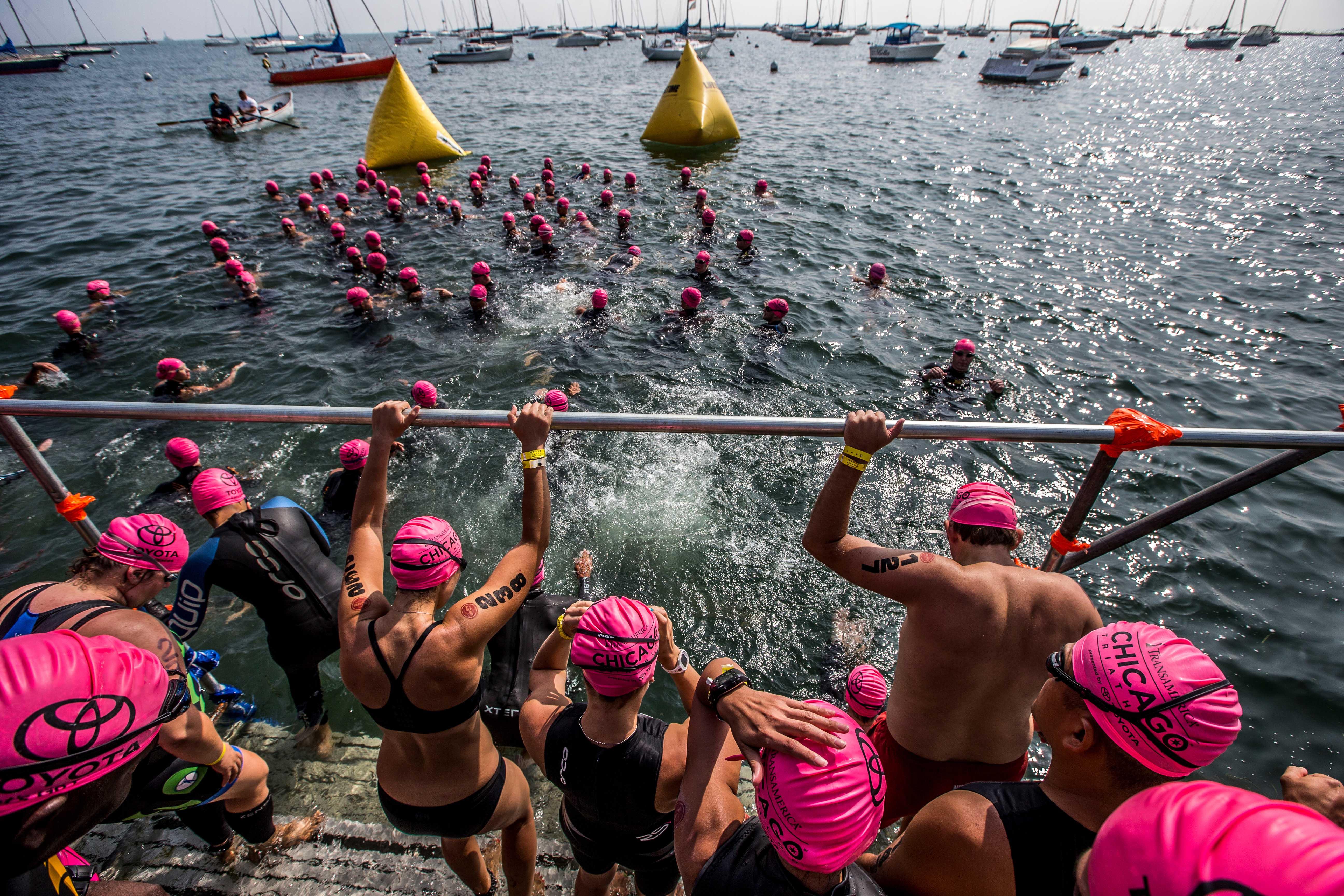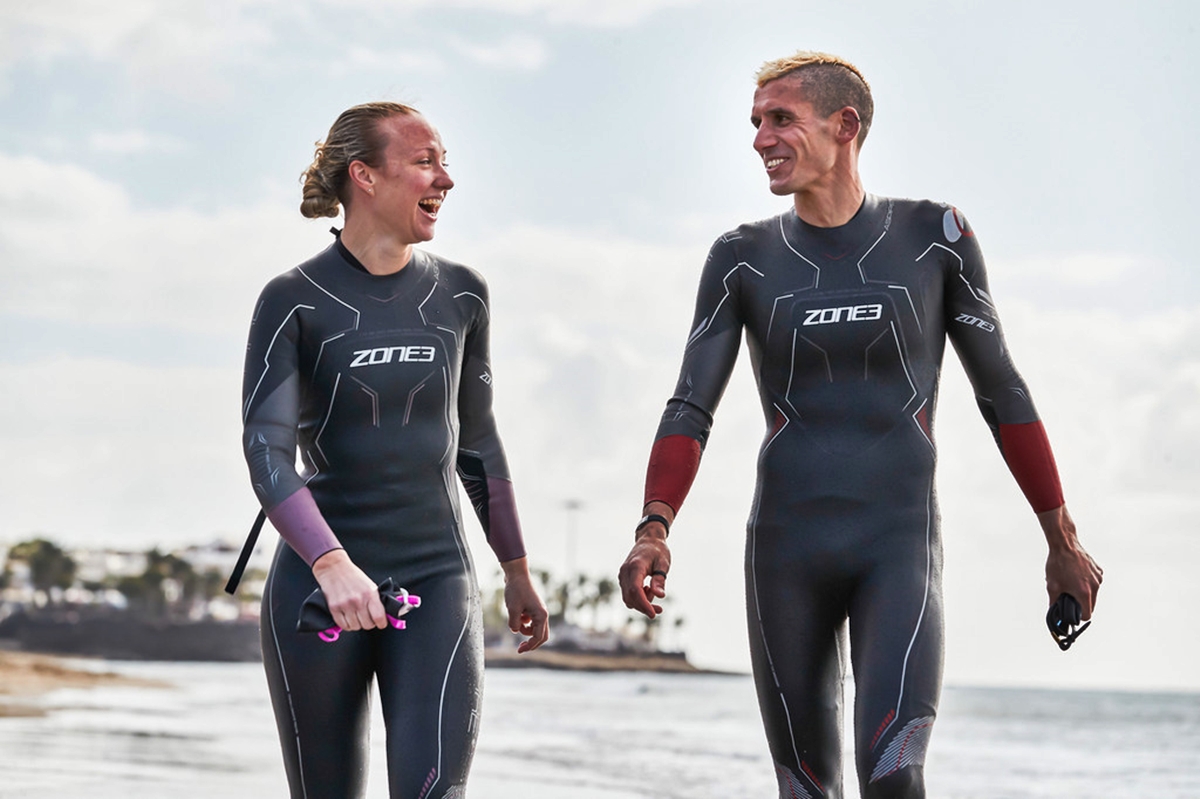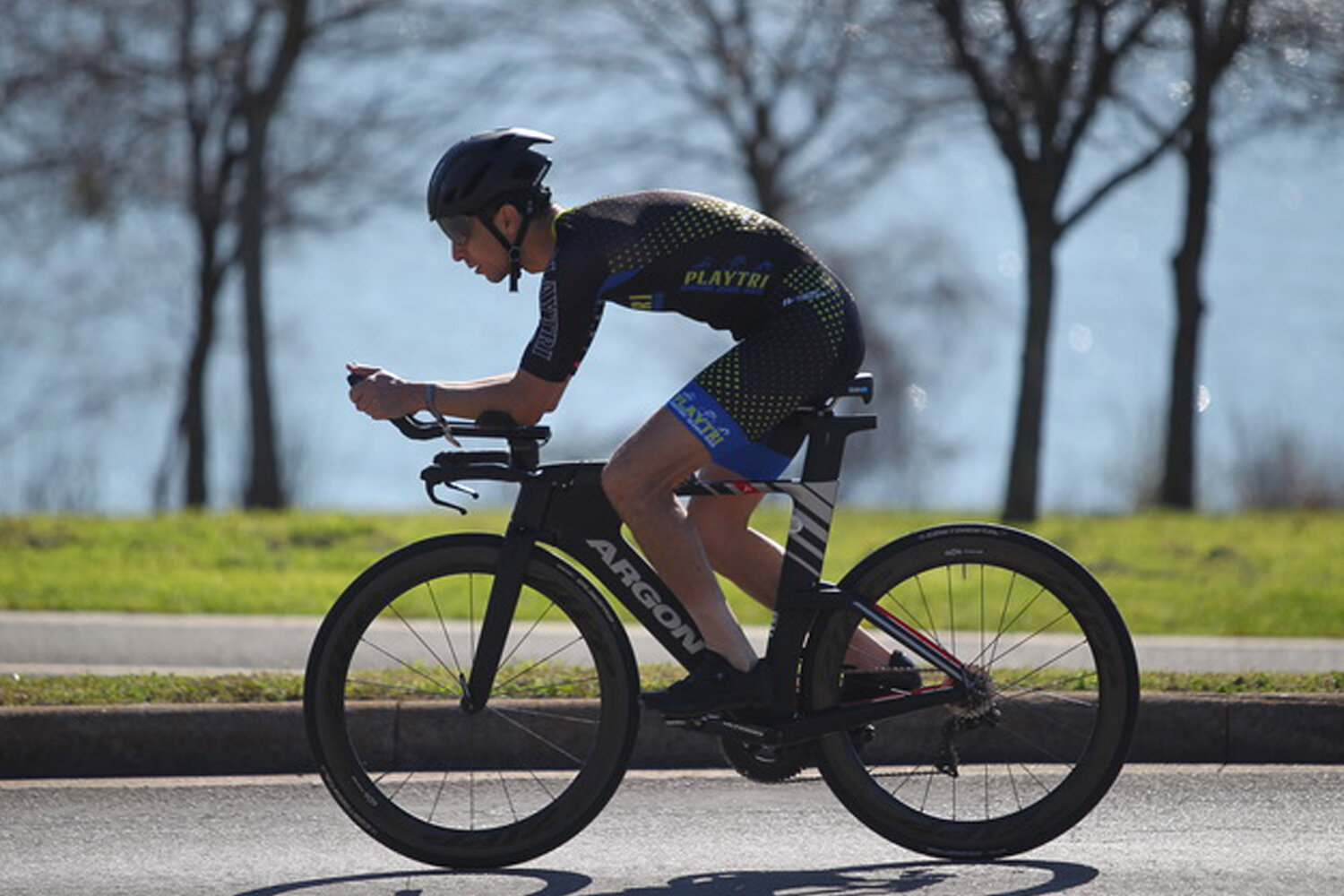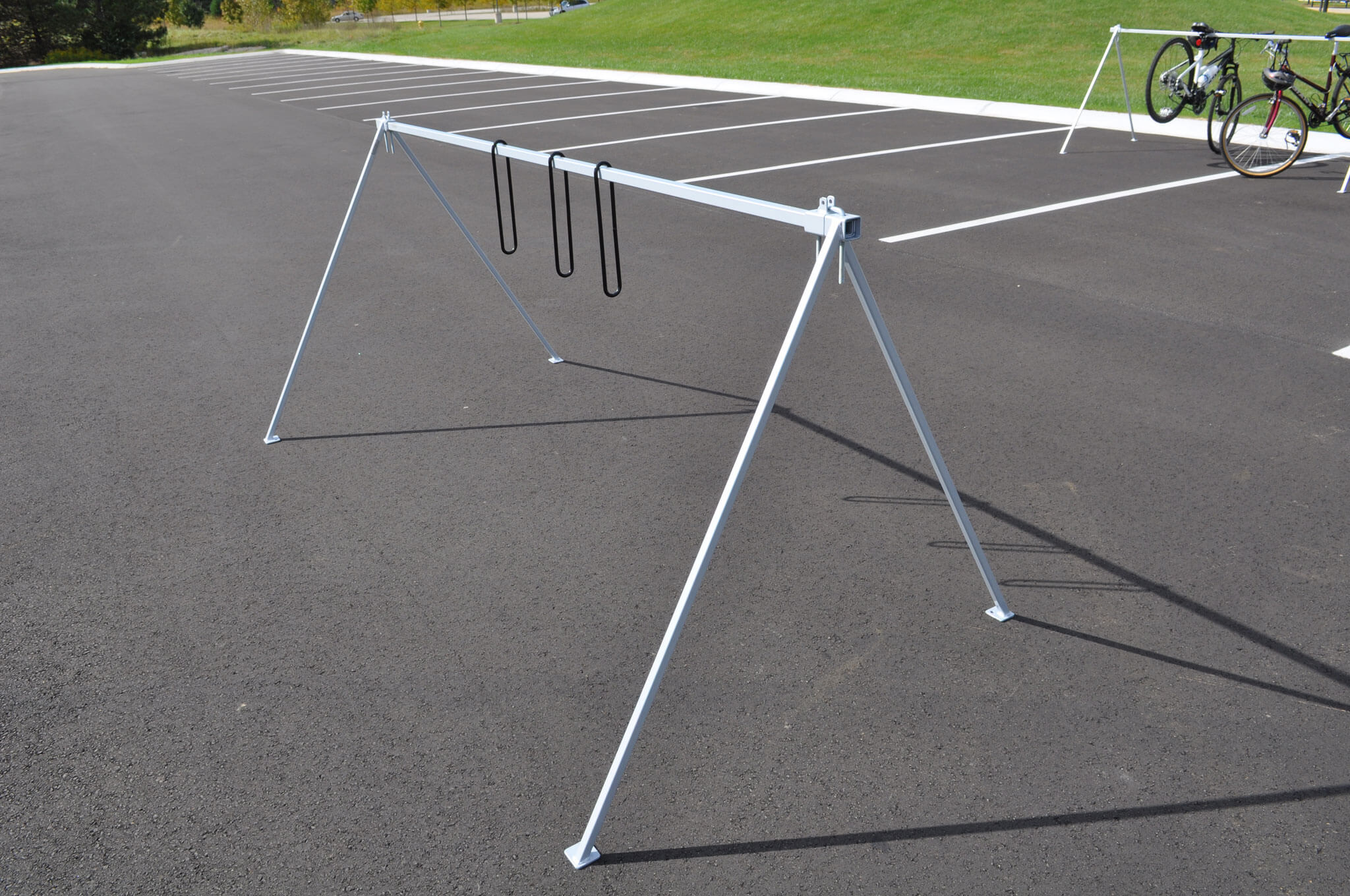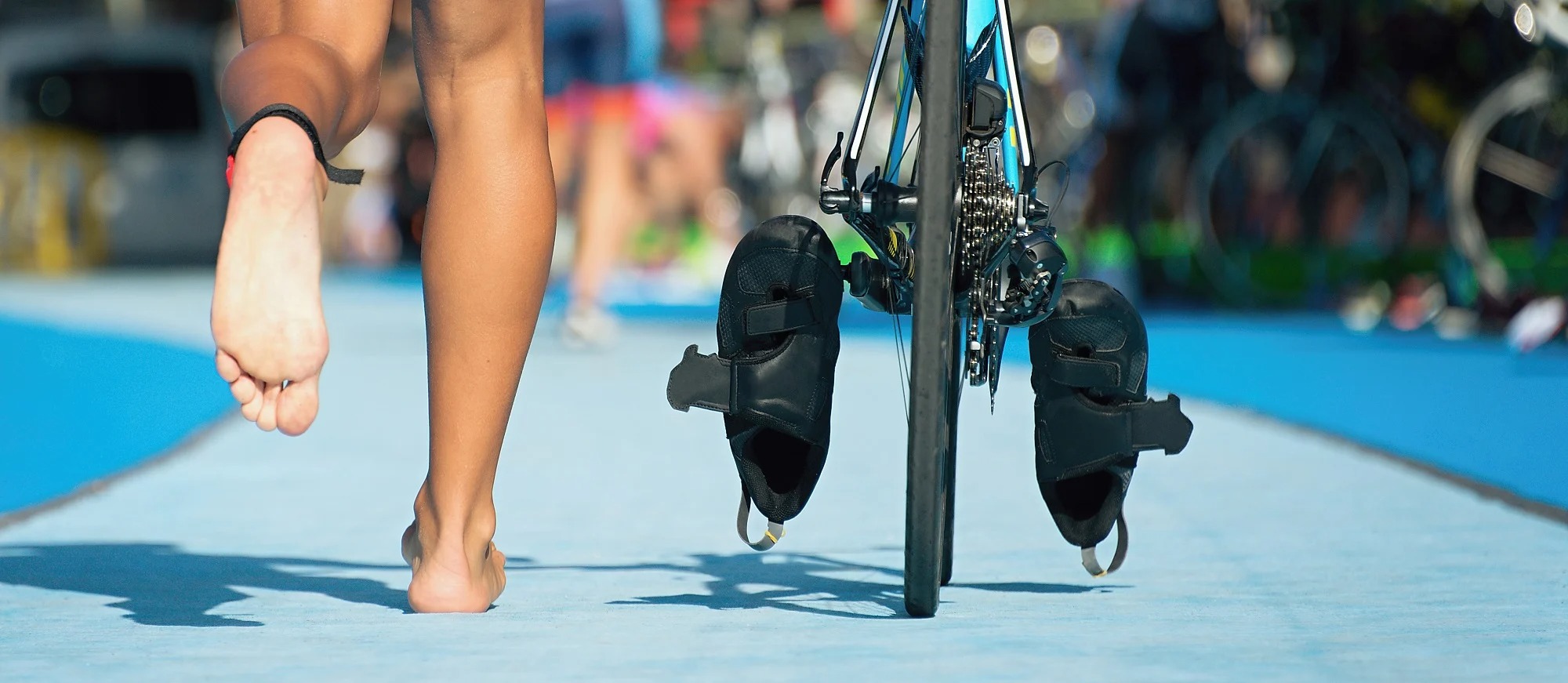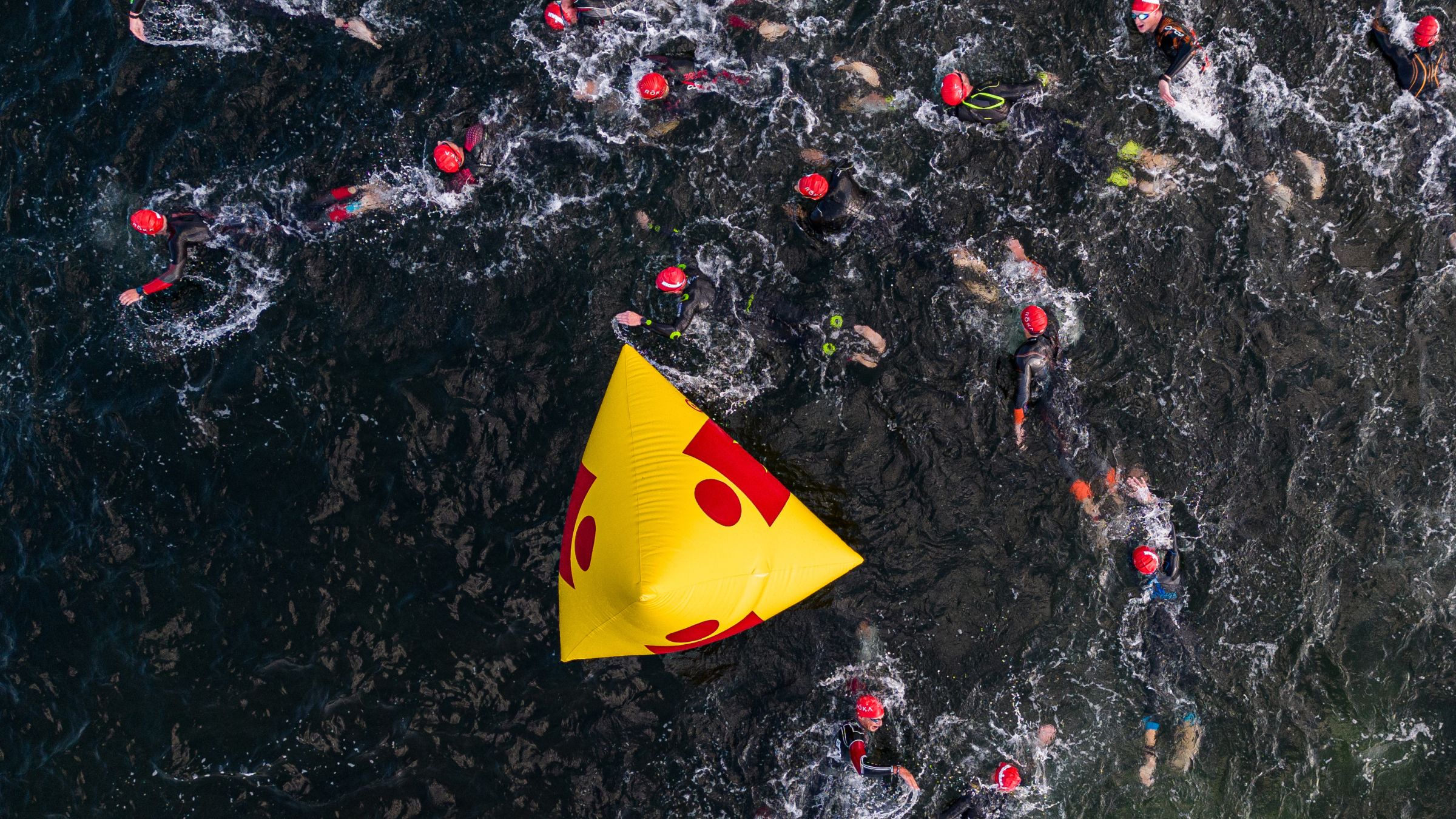

Featured
Thats What I Call A Triathlon Sound
Published: August 12, 2023
Featuring the ultimate triathlon sound experience, "That's What I Call A Triathlon Sound" will leave you breathless with its incredible featured tracks and heart-pounding beats.
Introduction
A triathlon is not just a physical competition; it is an immersive experience that combines swimming, cycling, and running. Athletes push their limits and spectators cheer them on, creating a vibrant atmosphere. One crucial element that contributes to the overall ambiance of a triathlon event is sound. The power of sound cannot be underestimated, as it has the ability to create excitement, motivate participants, and engage the audience.
In this article, we will explore the importance of sound in triathlons and how sound systems can enhance the overall experience. We will discuss the benefits of triathlon sound systems, the components required for an ideal setup, and offer tips on selecting and managing the right sound equipment. We will also delve into the role of music in amplifying the energy of triathlons and address key safety considerations and operational tips for a seamless sound experience.
Whether you are an event organizer, an athlete, or a spectator, understanding the impact of sound in triathlons can help you appreciate the event on a whole new level. So, let’s dive in and uncover the world of sound in triathlons!
The Power of Sound in Triathlons
Sound plays a vital role in creating an immersive and captivating experience in triathlons. It has the power to evoke emotions, build anticipation, and enhance the overall atmosphere of the event. Here are some key reasons why sound is so impactful in triathlons:
- Motivation and Energy: Triathlons push athletes to their physical and mental limits. The right sound system can provide a constant stream of motivational music and announcements, boosting the spirits of both participants and spectators. The energetic beats and cheering voices create a sense of excitement and inspire the athletes to keep going.
- Engaging the Audience: Spectators play a critical role in the success of a triathlon. Sound systems help keep the audience engaged and entertained by providing live commentary, background music, and play-by-play updates. This creates a more interactive experience for the spectators and encourages them to cheer on the athletes.
- Creating a Thrilling Atmosphere: The sound of cheering crowds, upbeat music, and race announcements adds to the thrill and adrenaline rush that comes with triathlons. It creates a captivating environment that heightens the overall experience for both participants and spectators alike.
- Building a Sense of Community: Triathlons bring together people from all walks of life with a shared passion for fitness and competition. Sound systems facilitate communication and help foster a sense of community by delivering important announcements, such as race updates, safety instructions, and event information. This strengthens the bond between participants and organizers.
- Enhancing the Competitive Spirit: Triathlons are fiercely competitive events, and sound systems can enhance the competitive spirit by providing real-time updates on athlete positions, distances covered, and time remaining. This adds an element of strategy and excitement, both for the athletes and the spectators.
The power of sound in triathlons is undeniable. It sets the stage for a dynamic and engaging event, igniting the passion of both participants and spectators. By understanding the impact of sound and harnessing its potential, triathlon organizers can create an unforgettable experience that leaves a lasting impression on everyone involved.
The Benefits of Triathlon Sound Systems
Triathlon sound systems offer numerous benefits that contribute to the overall success and enjoyment of the event. From improving communication to enhancing the overall atmosphere, here are some key advantages of using sound systems in triathlons:
- Clear Communication: Triathlon sound systems provide a clear and amplified means of communication. Race announcements, safety instructions, and updates can be broadcasted to participants and spectators, ensuring that important information is effectively conveyed. This helps in maintaining a smooth flow of the event and ensures that everyone is well-informed.
- Improved Spectator Experience: Sound systems enhance the overall spectator experience by providing live commentary, music, and race updates. Spectators can enjoy the event more fully with clear, engaging, and entertaining sound reinforcement, heightening their sense of involvement and excitement.
- Increased Athlete Motivation: Triathlon sound systems have the power to motivate and energize the athletes. By playing motivational music and announcing the progress of participants, sound systems can inspire athletes to push their limits and give their best performance. This encouragement can make a significant difference in their mindset and drive to succeed.
- Enhanced Safety Measures: Sound systems allow for effective dissemination of safety information during triathlons. Organizers can use sound systems to relay important safety instructions, such as changes in the course or emergency information, ensuring that participants and spectators are well-informed and protected. This helps in maintaining a safe and secure environment throughout the event.
- Creating an Engaging Atmosphere: Sound systems play a crucial role in setting the mood and creating an engaging atmosphere at triathlons. By playing music that matches the pace and energy of the event, sound systems add to the overall ambiance and excitement. The right music selection can engage the audience and energize the participants, making the event more enjoyable for everyone involved.
By incorporating triathlon sound systems into the event, organizers can enhance communication, motivation, and safety while creating a memorable and immersive experience for participants and spectators alike. These systems contribute to the overall success and enjoyment of the triathlon, making it an event to remember.
Components of an Ideal Triathlon Sound System
An ideal triathlon sound system is composed of various components that work together to provide clear and powerful sound reinforcement. Here are the key components necessary for an effective triathlon sound system:
- Main Speakers: High-quality main speakers are the backbone of a triathlon sound system. These speakers should have sufficient power and clarity to cover the entire event area and deliver sound to both participants and spectators. They should be strategically positioned to ensure even distribution of sound without distortion.
- Subwoofers: Subwoofers are essential for delivering deep, low-frequency sound, especially for the music played during the event. They add depth and impact to the overall sound experience, enhancing the energy and enthusiasm of the participants and spectators.
- Sound Mixer: A sound mixer is crucial for controlling and adjusting various audio inputs, such as microphones and music sources. It allows the sound engineer to balance the sound levels, apply equalization, and make real-time adjustments during the event to ensure optimal sound quality.
- Microphones: High-quality microphones are essential for clear and crisp vocal reinforcement during announcements, commentary, and interviews. Wireless microphones offer flexibility and mobility for event personnel, allowing them to move freely while still being heard by the audience.
- Amplifiers: Amplifiers are responsible for boosting the audio signal from the sound mixer to the speakers. They ensure that the sound travels seamlessly to all parts of the event area, maintaining consistent volume levels and clarity throughout the triathlon.
- Playback Devices: Playback devices, such as CD players, MP3 players, or laptops, are needed to play pre-recorded music and sound effects during the event. These devices should be reliable and easily accessible for the sound engineer to cue and control the desired audio content.
- Cabling and Connectors: High-quality cables and connectors are crucial for ensuring a reliable and interference-free connection between all components of the sound system. The use of balanced cables and connectors helps minimize noise and signal degradation.
- Power Distribution: Adequate power distribution is necessary to provide consistent and reliable electricity to all sound system components. This includes power amps, mixers, and speakers, ensuring uninterrupted sound delivery throughout the event.
Each component in an ideal triathlon sound system plays a vital role in delivering clear and powerful sound reinforcement. By ensuring the proper selection and integration of these components, organizers can create an audio experience that adds to the excitement and overall success of the triathlon.
Selecting the Right Sound Equipment for Your Triathlon
Choosing the appropriate sound equipment for your triathlon is crucial to ensure optimal sound quality and a memorable experience for participants and spectators. Here are some key considerations to keep in mind when selecting sound equipment for your triathlon:
- Venue Size and Layout: Assess the size and layout of the event venue to determine the sound coverage requirements. Consider the distance between speakers and the audience, the presence of natural obstructions, and any noise restrictions in the area. This will help you determine the number and power rating of the speakers needed for effective sound distribution.
- Power and Audio Requirements: Understand the power and audio requirements of your sound equipment. Ensure that the available power supply can support all the equipment without overloading the circuits. Additionally, consider the number of audio inputs and outputs required for microphones, playback devices, and other audio sources.
- Quality and Durability: Invest in high-quality and durable sound equipment to ensure reliability and longevity. Choose brands and models known for their superior performance and rugged construction, as triathlon events can be physically demanding and subject equipment to outdoor elements.
- Portability and Ease of Setup: Look for sound equipment that is easy to transport and set up. Consider portable speaker systems, lightweight microphones, and user-friendly mixers that can be quickly assembled and dismantled. This will save time and effort during event setup, allowing for smooth sound operations.
- Compatibility and Expandability: Ensure that your sound equipment is compatible with various audio sources and can be expanded or upgraded as needed. This will allow for flexibility in incorporating new technologies or accommodating future event growth.
- Budget: Establish a budget for your sound equipment and prioritize your expenditure based on the importance of each component. Allocate funds to invest in high-quality speakers and microphones, as these are critical for delivering clear and powerful sound during the triathlon.
- Expert Advice and Support: Seek guidance from sound professionals or experienced event organizers who have expertise in selecting and using sound equipment for triathlons. They can provide valuable insights and recommend specific brands or models based on their firsthand experience.
By carefully considering these factors and selecting the right sound equipment, you can create an immersive and engaging sound experience for your triathlon event. Remember, investing in quality equipment that suits your specific requirements will contribute to the overall success and enjoyment of the event for participants and spectators alike.
Setting Up and Managing Sound Systems in Triathlons
Properly setting up and managing the sound systems in triathlons is essential to ensure a seamless and impressive audio experience. Here are some key steps to consider:
- Plan the Setup: Before the triathlon, carefully plan the placement of speakers, microphones, and other sound equipment. Consider the layout of the event venue, the positions of the participants and spectators, and any potential obstructions. Ensure that the speakers are positioned for optimal sound coverage throughout the entire area.
- Test and Balance the Sound: Conduct a thorough sound check prior to the event to ensure optimal sound quality and balance. Adjust the volume levels, equalization settings, and microphone sensitivity to create a balanced sound mix. Test the sound system by playing music and making announcements to ensure clarity and audibility in all areas of the venue.
- Assign Sound Personnel: Designate trained sound personnel to manage and operate the sound equipment during the triathlon. Ensure that they are familiar with the setup and are capable of handling any technical issues that may arise. Assign specific individuals to monitor sound levels, troubleshoot any problems, and make adjustments as needed throughout the event.
- Monitor Sound Levels: Continuously monitor the sound levels during the event to ensure that they are appropriate and comply with any noise regulations in place. Adjust the volume levels as needed to maintain a pleasant audio experience without causing discomfort or disturbance to participants or nearby residents.
- Maintain Communication: Establish effective communication channels between sound personnel, event organizers, and other key stakeholders. This will facilitate smooth coordination and ensure that sound personnel are aware of any changes or updates that may impact the sound system setup or operation.
- Address Technical Issues Promptly: Stay vigilant and address any technical issues that may occur during the triathlon promptly. This includes addressing sound equipment malfunctions, cable or connector problems, or audio signal disruptions. Having backup equipment and spare parts readily available can help mitigate any potential disruptions.
- Ensure Safety: Take necessary precautions to ensure the safety of all sound personnel and attendees. Secure cables and equipment to prevent tripping hazards, and make sure that power sources, electrical connections, and cables are safely installed and protected from water or other potential hazards.
- Evaluate and Improve: After the triathlon, evaluate the effectiveness of the sound system setup and operation. Gather feedback from participants, spectators, and sound personnel to identify any areas for improvement. This will help refine the sound system setup for future events and enhance the overall audio experience.
By following these steps and implementing effective sound system setup and management practices, you can ensure a seamless and engaging audio experience for everyone attending the triathlon. A well-executed sound system will contribute significantly to the overall success and enjoyment of the event.
Amplifying the Triathlon Experience with Music
Music has the incredible ability to enhance and elevate the triathlon experience, creating a dynamic and engaging atmosphere for both participants and spectators. Here’s how you can amplify the triathlon experience with the power of music:
- Motivation and Energy: The right music can transform the energy of a triathlon event. Upbeat and high-tempo tracks can motivate participants to push themselves harder, while also energizing the spectators. Songs with inspiring lyrics and catchy beats can create a contagious atmosphere of determination and excitement.
- Match the Pace: Choose music that matches the pace of the event. For example, during the swim leg, calming and ambient music can help athletes find their rhythm. As the race transitions to the cycling and running legs, gradually increase the tempo and intensity of the music to align with the participants’ energy levels.
- Encourage Spectator Involvement: Music can create a bond between the athletes and the spectators. Inviting the crowd to clap, sing, or dance to specific songs can foster a sense of unity and support. Engage the audience by playing popular and recognizable tunes, encouraging them to cheer louder and become an active part of the event.
- Create Specific Playlists: Develop different playlists for different segments of the triathlon. For instance, have a playlist of relaxing tracks for pre-race warm-ups and stretching, a playlist of high-energy songs for the cycling leg, and a playlist of motivational anthems for the final sprint. Tailor the music to enhance the vibe of each stage and keep the energy levels high throughout the event.
- Customize for Athletes: Allow participants to submit their favorite songs or genres and incorporate them into the event’s music lineup. Hearing their chosen tracks can provide a personal connection and extra boost of motivation for the athletes, making their triathlon experience even more memorable.
- Utilize Live Performances: Consider including live performances by local bands or musicians along the race route or at the finish line. Live music infuses an authentic and vibrant energy into the event, captivating both athletes and spectators. Interactive performances that encourage participation, such as drumming or singing along, add an extra level of excitement.
Remember to obtain the necessary licenses and permissions to play copyrighted music during the triathlon. Work with a professional DJ or sound engineer who can curate the appropriate playlists and seamlessly transition between tracks to maintain the flow of the event.
By harnessing the power of music, you can amplify the triathlon experience, creating a stimulating and unforgettable atmosphere that enhances the determination and drive of the athletes while engaging and inspiring the spectators.
Safety Considerations in Triathlon Sound Systems
While sound systems add excitement and engagement to triathlon events, it is crucial to prioritize safety when incorporating them into the event setup. Here are some key safety considerations to keep in mind:
- Electrical Safety: Ensure that all electrical components of the sound system, including cables, connectors, and power sources, are properly installed and maintained. Use weatherproof connectors and cover any exposed electrical connections to protect against moisture. Regularly inspect the electrical components for signs of wear or damage.
- Trip Hazards: Carefully plan the positioning of sound equipment to avoid creating tripping hazards for participants and spectators. Secure cables and wires to the ground with cable ramps or tape, keeping them out of high-traffic areas. Regularly inspect cables to identify and address any potential hazards.
- Power Load: Ensure that the power supply for the sound system is sufficient to handle the load of all the equipment. Overloading electrical circuits can lead to power failures or pose a fire risk. Distribute power evenly and use surge protectors to safeguard against power fluctuations and electrical surges.
- Noise Level: Be mindful of the noise levels generated by the sound system to avoid causing discomfort or harm to participants, spectators, or nearby residents. Check local noise regulations and adhere to them to maintain a respectful and peaceful environment. Adjust the sound levels accordingly and consider using directional speakers or sound barriers to control sound dispersion.
- Emergency Communication: Ensure that the sound system is designed to facilitate emergency communication, if needed. Have a backup communication plan in place in case of technical failures. Familiarize sound personnel with emergency protocols and equip them with the necessary knowledge and tools to swiftly communicate important information during emergency situations.
- Weather Conditions: Consider the impact of weather conditions on the sound system and take appropriate precautions. Protect the equipment from rain, extreme heat, or strong winds by using covers or enclosures. Be prepared to quickly disassemble and store sensitive equipment if severe weather poses a risk.
- Clear Communication: Ensure that all public announcements and safety instructions delivered through the sound system are clear and intelligible. Use quality microphones and adjust sound settings to mitigate background noise. Regularly check and maintain microphone functionality for optimal communication clarity.
- Safe Equipment Handling: Train sound personnel on the safe handling and operation of the sound equipment. This includes proper cable management, secure equipment setup, and following manufacturer guidelines for equipment usage and maintenance. Regularly inspect the equipment for any defects or damage that may compromise safety.
Prioritizing safety considerations in triathlon sound systems is essential for the well-being of participants, spectators, and event personnel. By implementing these safety measures, you can minimize risks and create a secure environment for everyone involved in the event.
Tips for Ensuring Smooth Sound Operations in Triathlons
To ensure a seamless sound experience during triathlons, it’s important to have efficient sound operations in place. Here are some helpful tips to ensure smooth sound operations throughout the event:
- Thorough Planning: Plan and organize the sound operations well in advance of the triathlon. Create a detailed schedule that includes setup and sound check timings, as well as the sequence and timing of announcements and music playback.
- Experienced Sound Personnel: Enlist experienced sound engineers or personnel to handle the sound operations. Their expertise and knowledge will ensure that the sound system is set up correctly, and they can quickly troubleshoot any technical issues that may arise during the event.
- Constant Communication: Establish effective communication channels between sound personnel, event organizers, and other key stakeholders. Keep everyone informed of any changes or updates that may impact the sound operations. This will help avoid any last-minute surprises and ensure that everyone is on the same page.
- Backup Equipment: Have a contingency plan in place with backup sound equipment readily available. This includes spare microphones, cables, connectors, and amplifiers. In the event of any technical failures or issues, having backup equipment on hand will allow for quick replacements and minimal disruption to the sound operations.
- Sound Checks: Perform comprehensive sound checks before the triathlon begins. Test every microphone, playback device, and speaker to ensure they are functioning correctly. Adjust sound levels, equalization settings, and microphone sensitivity as needed to achieve the desired sound quality and balance.
- Volume Control: Ensure that sound levels are appropriate and audible to all participants and spectators. Regularly monitor the volume levels during the event to avoid any sudden spikes or drops that could affect the overall sound experience or cause discomfort to attendees.
- Organized Playlists: Prepare organized and well-curated playlists for each section of the triathlon, such as the swim, bike, and run legs. Ensure that the playlists flow seamlessly and align with the energy and pace of each stage of the event. Use fade-ins and fade-outs for smooth transitions between songs and announcements.
- Continuous Monitoring: Assign personnel to continuously monitor the sound operations throughout the triathlon. They can listen for any sound quality issues, address volume adjustments, and handle any unexpected technical problems promptly. Regularly check cables and connections to ensure secure and uninterrupted sound delivery.
- Collaboration: Foster teamwork and collaboration between the sound personnel, event organizers, and other crew members. Regularly communicate and coordinate with other departments to ensure that sound operations align with the overall flow of the event.
- Post-Event Evaluation: Conduct a post-event evaluation and gather feedback from sound personnel and participants. Identify any areas for improvement and note any challenges or successes encountered during the sound operations. This feedback will help refine future sound operations and enhance the overall sound experience of future triathlons.
By implementing these tips, you can help ensure smooth sound operations during triathlons, delivering an exceptional audio experience that enhances the overall atmosphere and enjoyment of the event for both participants and spectators.
Conclusion
Sound is a powerful element that can significantly enhance the triathlon experience for participants and spectators alike. Triathlon sound systems have the ability to motivate athletes, engage the audience, and create a thrilling atmosphere. By carefully selecting the right sound equipment, setting it up effectively, and managing it with safety considerations in mind, you can create a seamless and enjoyable audio experience throughout the event.
The benefits of triathlon sound systems are numerous. They improve communication, enhance the spectator experience, increase athlete motivation, and contribute to the overall atmosphere of the event. By amplifying the triathlon experience with carefully curated music, you can create a memorable and energetic environment that adds an extra level of excitement for everyone involved.
In order to ensure smooth sound operations during triathlons, it is important to plan in advance, communicate effectively with sound personnel and event organizers, perform thorough sound checks, and monitor the sound levels continuously. By taking these steps, you can minimize technical issues, maintain optimal sound quality, and create a seamless audio experience for participants and spectators.
Overall, sound systems play an integral role in triathlons, bringing the event to life and elevating the overall experience. By harnessing the power of sound, triathlon organizers can create an immersive and engaging event that leaves a lasting impression on participants and spectators. So, let the sound of success resonate through your triathlon and create an atmosphere that sets the stage for an unforgettable athletic endeavor.

